White-tailed Kite
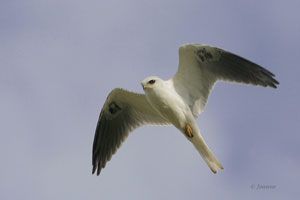
© Joanne Kamo
Elanus leucurus
Family: (Accipitridae) Hawks and Allies
Preferred Habitat: Coastal plain.
Seasonal Occurrence: Common throughout the year. Breeds in our area.
Profile by Jess McClean: The White-tailed Kite is a medium-sized hawk which is resident in the United States along the Pacific coast from southern Washington to California and along the coasts of Florida, Louisiana and Texas. Adult White-tailed Kites have gray backs and wings, long, white tails and white undersides and faces with striking red eyes. There is no difference in plumage between the sexes. Juveniles are very similar to adults in appearance but have buffy streaks on their breasts and heads, scalloped gray feathers on their backs, and yellow eyes. They can often be seen hovering up to 80 feet over grasslands while hunting for prey, primarily house mice and voles. This ability to hover midair without beating their wings is so characteristic of kites it is known as 'kiting'.
White-tailed Kites engage in spectacular courtship displays during the breeding season in which a male offers an item of prey to a female before egg laying. The female then flies up to meet the male, turns upside-down, and grasps the prey in midair.
The Bolivar Peninsula is a great place to look for these birds either 'kiting' or perched on trees and wires.
Additional Notes by Daniel Elting: The White-tailed Kite is a medium sized raptor with white body and head feathers, black shoulder, and a distinct red eye. Their brilliant white feathers distinguish them from the similar looking but much duller gray Mississippi Kite.
Kites are often seen rapidly flapping their wings directly into the wind and hovering in place high in the air scanning for pray, this behavior has come to be known as “kiting.” White-tailed Kites prefer grassland, savanna, or marsh habitats where their kiting behavior is most effective, these birds are almost always seen hunting near a water source. They quickly dive down on their prey from their hovers to catch small mammals such as mice, rats, and voles.
White-tailed Kites typically nest in the upper third of trees that may be 10–160 feet tall. These can be open-country trees growing in isolation, or at the edge of or within a forest. White-tailed Kites have a spectacular courtship display where the male presents a prey item to the female, the female then flies up in the air to grab the prey from the male in mid-air. During the non-breeding season White-tailed Kites can be found roosting in trees in large over 100 birds.
White-tailed Kites have a relatively small range in the U.S., only occurring in Texas and along the Pacific Coast up to Oregon. They are seen in southeast Texas year-round, often seen sitting along powerlines or hunting via their patented “kiting” strategy.
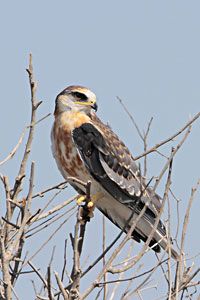
© Greg Lavaty
Profile by Grace Yaros: Simultaneously elegant and fierce, White-tailed Kites are medium-sized raptors, related to hawks and eagles. They are white underneath and gray above, with a bold wing pattern. They have distinct black shoulder patches, and when viewed from underneath, they also have black wingtips and large black spots near their wrists. The combination of this wing pattern and their namesake bright white tails is distinctive, and can differentiate them from Mississippi Kites and Swallow-tailed Kites. Young White-tailed Kites are similar in appearance to adults, but have some brown streaking on the head and breast. Like other kites, White-tailed Kites have long, pointed wings and are quite graceful in flight.
White-tailed Kites are denizens of grasslands, open woodlands and savannas. Their range in the United States is largely restricted to California, the Texas Gulf Coast, and southern Florida, though they can also be found throughout Central America and as far south as Argentina and Chile. They are commonly seen hovering in place while searching for prey, a behavior known as kiting! Their diet consists primarily of small mammals such as voles.
These incredible raptors can be seen patrolling the fields at Anahuac National Wildlife Refuge, Galveston Island State Park, Horseshoe Marsh Bird Sanctuary, and Bolivar Flats Shorebird Sanctuary.
-
Cornell Lab of Ornithology
-
Bird Guide
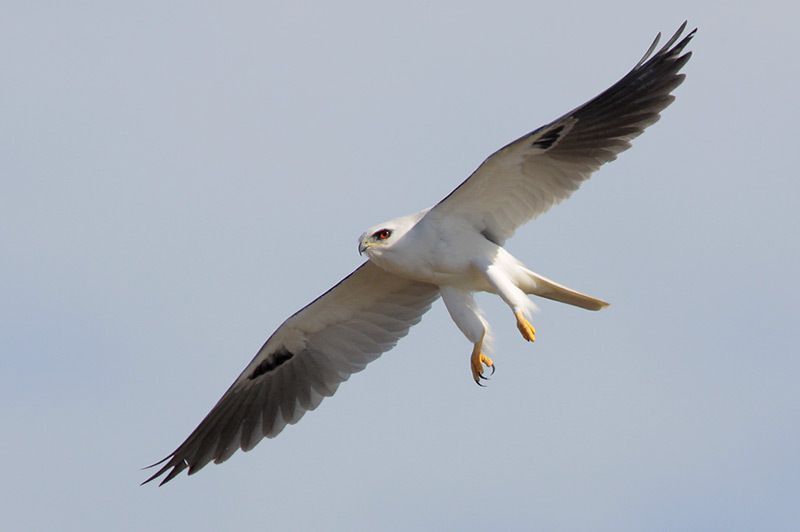
© Greg Lavaty, www.texastargetbirds.com
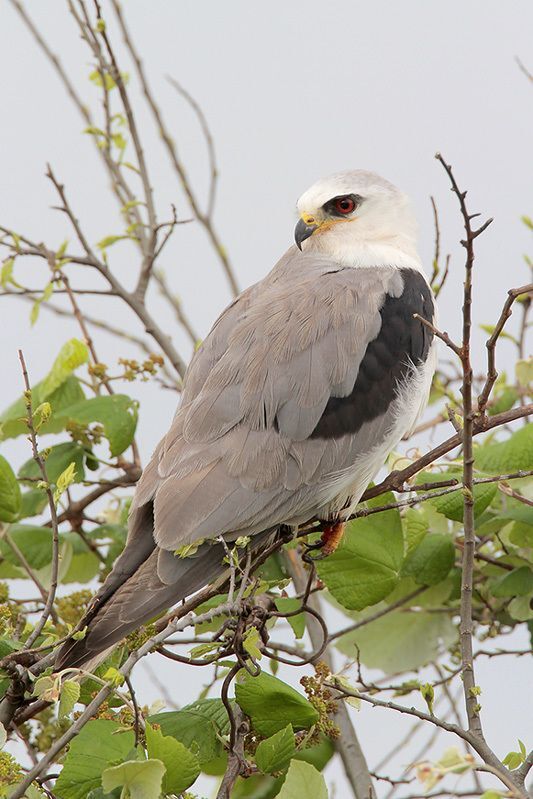
© Greg Lavaty, www.texastargetbirds.com
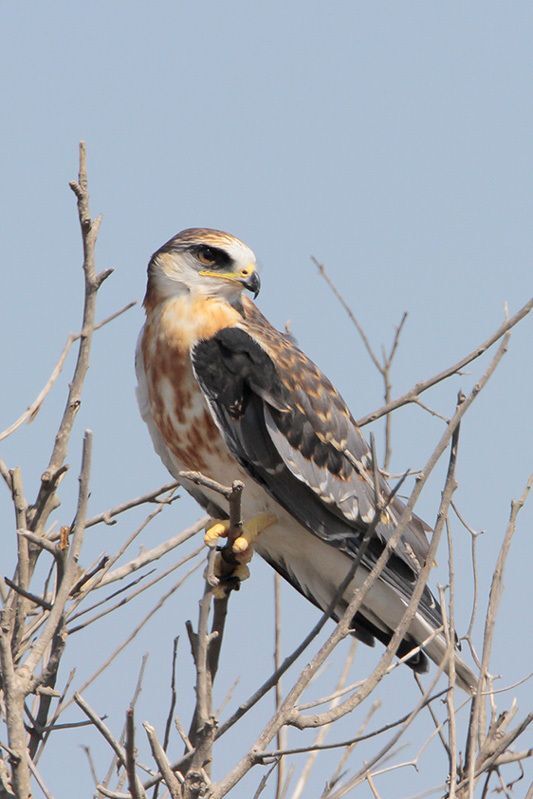
© Greg Lavaty, www.texastargetbirds.com
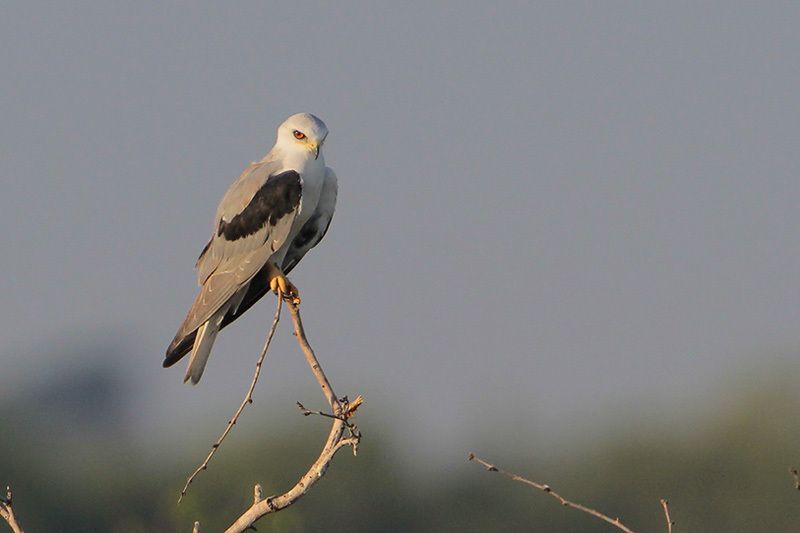
© Greg Lavaty, www.texastargetbirds.com




















